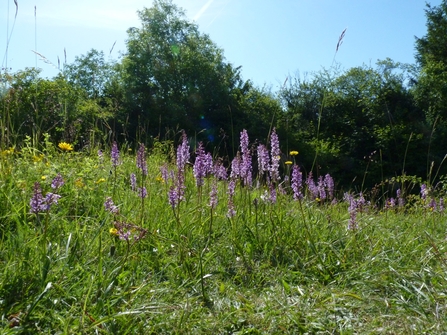
Kate Titford
Protect wildlife for generations to come
Wildflowers in the Coronation Meadow at BBOWT's Chimney Meadows nature reserve. Picture: Wendy Tobitt

Kate Titford
Tucked away on the edge of Wendover Woods between Aylesbury and Tring, Aston Clinton Ragpits is a remarkable nature reserve. Just three hectares in size and boasting eight species of orchid and over 25 different types of butterfly, this reserve offers a real treat to visitors in spring and summer.
There is a network of smaller paths that visitors are free to explore, these include some on short, steep slopes, with steps and loose stone. Please stick to the paths to avoid trampling the many wild flowers that grow here.
You can help count the thousands of orchids at the reserve by joining in with the annual orchid count on Saturday 17 June (free but booking essential).
Learn all about the reserve and the wildlife that lives there at our guided walk on Sunday 18 June.
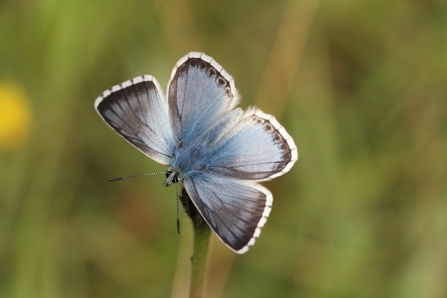
Chalkhill blue by Colin Williams
Bacombe Hill is noted for its wild orchids and butterflies such as the pyramidal, chalk fragrant and bee orchids and the chalkhill blue butterfly. You can also enjoy superb views over Wendover and Aylesbury Vale and watch red kites soar overhead from this nature reserve on the Chilterns escarpment.
There are footpaths and a bridleway through this reserve, which is steep in places and includes kissing gates.
Join warden Paul Niddler for an introduction to Bacombe Hill on our guided walk on Saturday 24 June.
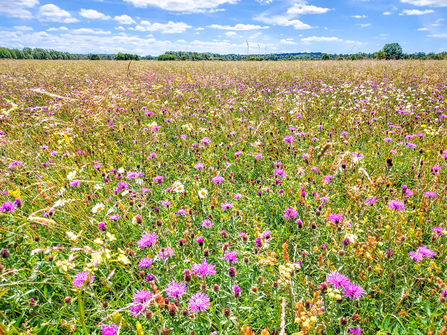
Wildflowers at BBOWT's Chimney Meadows nature reserve. Picture: Colin Williams
June is a wonderful month to visit Chimney Meadows to see the wildflowers meadows at their best. Part of the site is a National Nature Reserve (owned by Natural England), these wildflower meadows make up one of England’s largest remaining areas of unspoilt neutral grassland. They were the seed source for the meadows that have been restored elsewhere at Chimney Meadows.
There is a new observation platform on the banks of the River Thames that gives views out over the National Nature Reserve and Duxford Old River, to the south of the river.
Some paths and the two bird hides are suitable for people with limited mobility. Contact BBOWT for further information on 01367 870904. Elsewhere the ground is flat but can be bumpy underfoot.
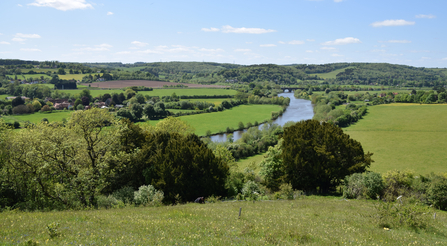
Helen Dewar
Enjoy magnificent views of the winding River Thames and sloping chalk grassland full of national rarities. Bee, pyramidal and common spotted-orchids, common twayblade and white helleborine grow on this sloping grassland.
The reserve is also excellent for insects, featuring a variety of bee species, uncommon shieldbugs, grasshoppers and day-flying moths. Butterflies include the lovely chalkhill blue, green hairstreak and grizzled skipper.
There is no parking at the reserve. Please park in the village and walk. The Thames Path National Trail passes close to the site so why not make your visit part of a longer walk. There are steep slopes and a long flight of steps here.
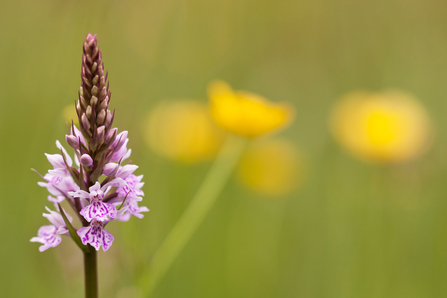
Common spotted orchid by Chris Deeney
A sliver of beech woodland and chalk grassland, Hurley Chalk Pit is visited by 15 species of butterfly and is home to wild orchids. The small area of chalk grassland contains many interesting grasses and herbs, such as the elegant quaking-grass and clustered bellflower. Six different wild orchids have been recorded on the reserve including bee, pyramidal and fragrant orchids. Wild marjoram flourishes on the pit floor, alongside cowslip and wild candytuft.
There reserve is half a mile along a bridleway from the main road. There are gentle slopes but watch out for some loose flint and roots.
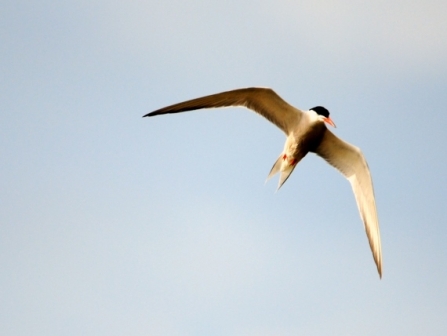
This large, flooded gravel pit has several islands and a ragged, scrubby fringe that skirts around the shallows. The shallows of the lake are perfect feeding areas for wetland birds, while its islands provide quiet spots where common terns and oystercatchers can breed safely away from predators such as foxes. Look out also for nesting wetland birds such as great crested grebe, moorhen and coot.
The scrubby perimeter of the lake is home to blackcaps, whitethroats and other songbirds and bats hunt over the water at dusk.
There are sections of boardwalk and the site is mostly flat with some short slopes but can be uneven in places.